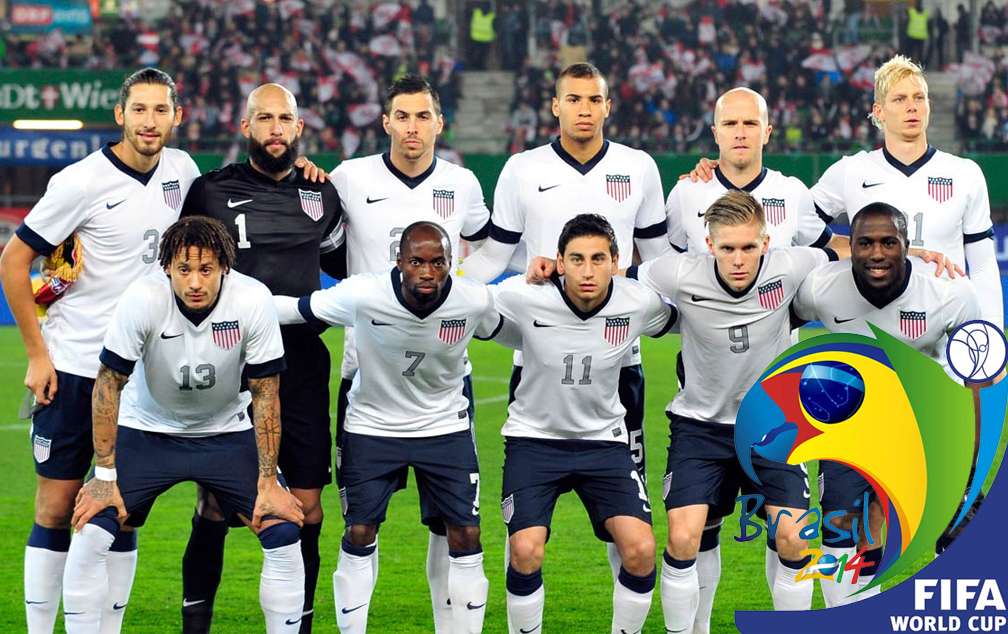Sadly, it’s time once again to put away our team USA soccer jerseys and wait another four years before soccer becomes a central theme in the American sports conversation.
It’s not that team USA doesn’t have talent. We continually improve our showings in international contests. Many of our national team players have made significant talent contributions to elite foreign teams.
After all, Americans grow up in an athletic culture that offers a variety of competitive advantages.
1. Variety
Although more youngsters are unfortunately specializing in one sport at a young age, many American youngsters grow up learning to play multiple sports. This develops a wide array of coordination and raw athleticism that can be advantageous compared to youngsters who develop only the skills needed for one activity.
2. Large talent pool
We have a large talent pool. The Sports and Fitness Industry Association estimates that there are over 30 million youth playing a competitive sport at any given time in the United States. That is the largest developmental pool in the world from which to pluck high potential athletes.
3. Money
The spoils of capitalism have made America the largest economy in the world. Our ability to acquire fields, equipment, and anything else money can buy is second to none.
With these apparent advantages, why is it that we nearly corner the market in the global sports scene for sports like football, basketball, and baseball, but we continue to fall short in soccer?
While American sports culture has some unique advantages, American soccer culture isn’t necessarily able to exploit them.
1. We focus on team outcomes, not individual development
While many foreign youth soccer organizations focus their developmental programs on honing individual talent, American youth organizations’ primary focus tends to be on win/loss records for teams.
When team wins are the focus of a developmental program for youngsters, brute strength and raw athleticism are more of an asset than sports related skill.
In an interview with the New York Times, Ronald de Jong, part of the youth development coaching staff with the elite Dutch soccer organization, Ajax Amsterdam, had this to say about their view of recruiting and developing young talent,
“I am never looking for a result — for example, which boy is scoring the most goals or even who is running the fastest. That may be because of their size and stage of development. I want to notice how a boy runs. Is he on his forefeet, running lightly? Does he have creativity with the ball? Does he seem that he is really loving the game? I think these things are good at predicting how he’ll be when he is older.”
The American development system often considers skill development merely a ‘warm-up” for scrimmages and games. This is in contrast to the most successful soccer cultures in other countries, like Spain, where entire programs and practices are based on skill development with occasional matches.
2. America’s best athletes don’t play soccer
 America has great athletes playing soccer. However, America’s diverse gene pool has created otherworldly athletes. The LeBron James’ and Calvin Johnsons’ of the world could dominate any sport they chose to play.
America has great athletes playing soccer. However, America’s diverse gene pool has created otherworldly athletes. The LeBron James’ and Calvin Johnsons’ of the world could dominate any sport they chose to play.
Unfortunately for American soccer fans, the “beautiful game” can’t pay the bills that football, baseball, basketball, and hockey can. According to the Business Insider, only 14 players in American Major League Soccer make over a million dollars a year. The entire payroll for the league is about $115 million. That is less than half of the payroll for the LA Dodgers baseball organization.
A young American athlete with world- class athletic attributes wants a payday. Soccer doesn’t have it for them yet.
Furthermore, in contrast with other countries, American soccer has become somewhat of an elitist sport. High-level training is often reserved for the families that can pay the $8,000-$12,000 per year for elite club memberships and the associated travel.
This creates a significant barrier of entry for the throngs of talented players from lower socioeconomic status.
3. Our kids play soccer, but they don’t PLAY soccer
In 2013, the United States Youth Soccer Organization had over 3 million participants. This number would rival any world soccer power in youth participation.
Unfortunately, American youths’ participation in soccer stops after supervised practices and games. Very rarely do we see pick-up youth soccer games at local fields and parks. Countries who dominate the global scene in soccer actually have to put up “no soccer playing” signs to prevent an impromptu game from breaking out in town squares, hotel lobbies, and parking lots!
The creativity and other intangibles involved with elite soccer aren’t nervously developed under an ever-assessing coach’s eye. They are developed in back yards, town squares, sidewalks, and parks during thousands of hours of unbridled trial and error.
Additionally, it’s during this unsupervised courtship that a true love and embodiment of the game is developed.
American soccer has an opportunity to exploit the unique advantages our prosperous country and become relevant on the world stage. A shift of priorities, methodologies, and economics is going to have to happen however to push things to the next level.
Meanwhile, shutting off the TV and sending kids outside with a soccer ball is a great first step!
Brett Klika CEO and co-founder of SPIDERfit is an international award- winning certified strength and conditioning coach, author, and motivational speaker with over 20 years experience motivating and inspiring youngsters to a life of health, fitness, and performance.
Brett consults with schools, athletic organizations, fitness professionals, and fortune 500 companies around the world.






Connect with SPIDERfit!